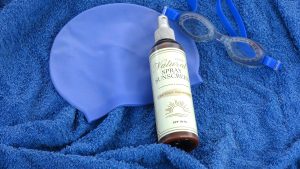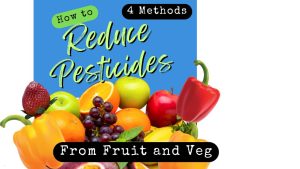The Food Bio-Compatibility Test: Our hair is an information storehouse; it holds information about foods and products we may be allergic to.
This article was written in May 2017
Hair is just hair, right? We comb and brush, trim, layer and cut, dye and style it many different ways… what other function could our hair possibly serve other than making us look good? Well, did you know that your hair holds detailed information about the health and condition of your body? Apparently, your hair can even be analysed to find food allergies, according to the providers of the Food Bio-Compatibility Test. Sending a lock of your hair through the mail, the test checks your hair sample in relation to 500+ foods we commonly buy at the supermarket. From there we learn which foods on the list are ‘Compatible’ (foods we should eat) and which are ‘Incompatible’ (foods we shouldn’t eat).
So I gave the test a try… twice.
I decided to try the test, along with following a 6 month protocol. The protocol was simple: take the test, find which foods are ‘incompatible’ and avoid them for 6-9 months. By avoiding problem foods, the body doesn’t have to work so hard to process those foods and, henceforth, uses its energy on healing and restoring instead. Along with this, take supplements and follow some other food/eating guidelines. I took the test twice within a 6 month period and I was surprised by my findings. Between the two tests, some of the foods that were listed as ‘incompatible’ stayed the same, but some new ‘incompatible’ foods/products showed up. Here are my results:
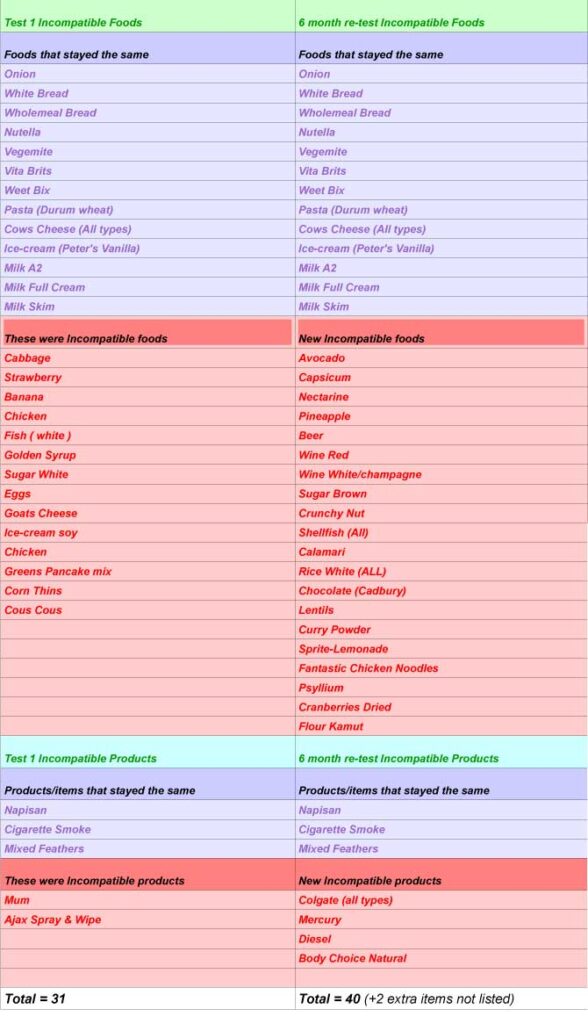
The results are interesting…
As you can see from the chart, 13 foods and 3 products/other stayed the same. These were predominantly dairy and wheat related products. Cigarette smoke and mixed feathers also stayed the same. I was very surprised to find I was allergic to onion and strawberries. Whilst my body seemed to be more resilient to soy products and eggs by the end of the 6 months, new foods came up as incompatible, such as capsicum, pineapple, avocado, lentils and shellfish. From 31 incompatible foods/products, there was an increase to 42. It seems that I developed more allergies than before.
Apparently, it’s totally normal to develop new allergies after the protocol has ended because the immune system is ‘down regulating’ – basically, it’s re-adjusting itself. 1
In the pdf document provided to me by Naturopathic Services, it says that the chemical process of foods may change when combined with other ingredients. So, this may explain why some of the foods in their original form may be marked as red (incompatible), but when mixed with other ingredients may come up as black (compatible). E.g. the test may show a reactive to corn, but not cornflakes; milk, but not cheese. It makes you think about how foods change the more they interact with other foods and the more they are processed.
Coincidence or not? I seemed to have developed allergies to the foods I was eating more of, such as psyllium, lentils and capsicum. I ate a lot of sprouted lentils during the protocol. I briefly researched this and have come across various sources that recommended to rotate food groups so that new allergies to foods don’t develop. Perhaps this is what happened?
So, where to now? Even though I gained better health, some of my ailments still aren’t completely gone. I was advised that there may be other underlying conditions that I need to look into, that it wasn’t just about the food allergies causing my health problems. I was also advised to repeat the 6 month protocol again.
I asked how often I would need to take the test, and wondered whether the BFCT was meant to be an ongoing process.
Hmm. How will I know if I can ever eat nectarines, pineapples, white rice or avocado unless I get another re-test? I love avocados, by the way, especially in sushi!
So I did ask these questions, and was advised that it was best to take the test every 12 months because, it seems, the immune system is dynamic. Allergies can ‘build up’ and cause the same or other health problems. 2
Here are what the test results look like
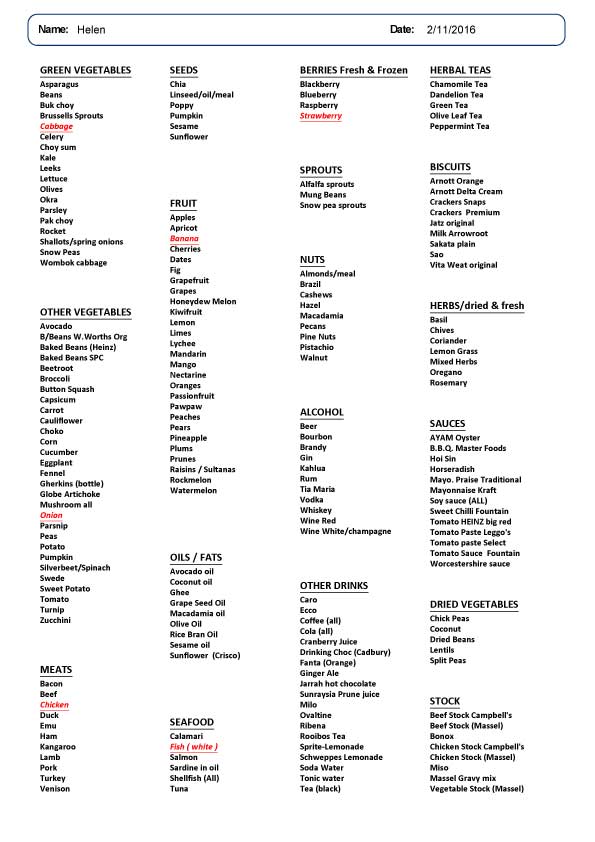
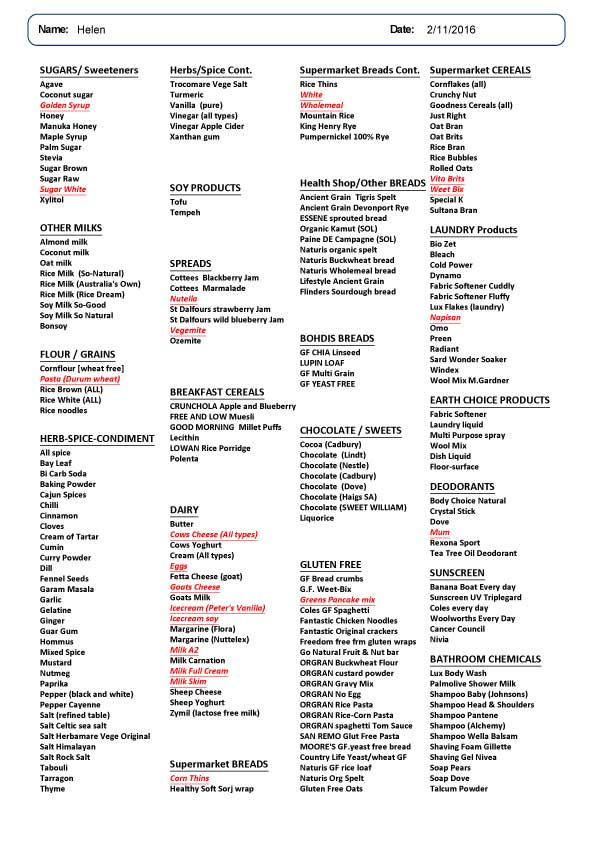
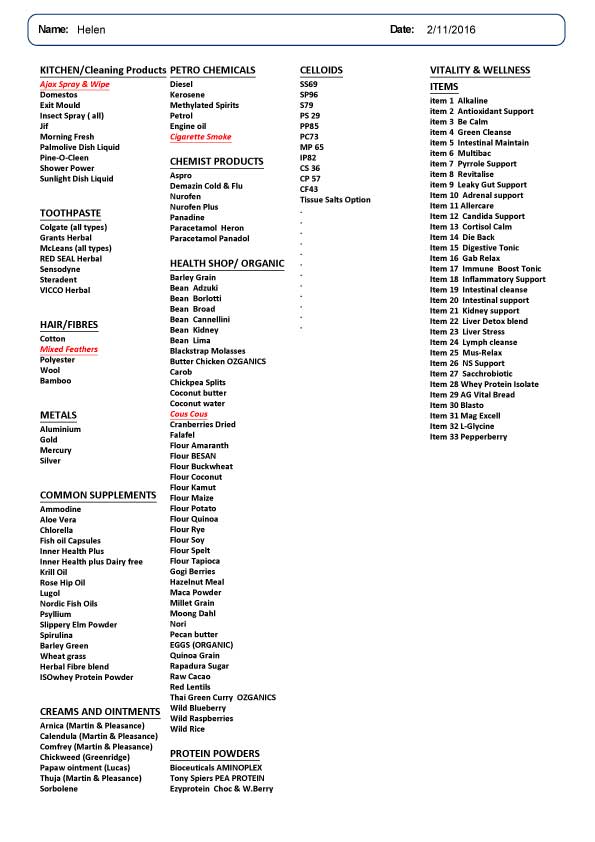
What else should I do whilst on the protocol?
- Avoid oranges, chocolate, yeast and any other mucus forming foods.
- Avoid all alcohol, coffee and black tea. Keep soft drinks to a minimum, although I didn’t consume any.
- Stay away from dairy and gluten. I had some rice, coconut and almond milks instead.
- I kept my protocol as (mostly) vegan. If not vegan, here are some tips for consuming fish, meat and eggs whilst on the program: If eating meat, chew it thoroughly. If eating eggs, consume only free range/organic. If eating fish, keep to a minimum. Atlantic Salmon is best.
- Use natural sweeteners such as stevia and honey instead of sugar or any other processed sweeteners.
- Use Extra Virgin Olive Oil and Virgin Coconut Oil. I had a minimum amount of avocado, nuts and seeds because, according to my test advice, they can be difficult to digest if eaten raw. I stayed away from any heated/processed oils.
- Avoid processed or fast foods (which may contain artificial colours/preservatives). I cooked my own food and kept my food menu very simple.
- Drink filtered water, at least enough to urinate 6-8 times per day.
- Eat fruit alone; one at a time is best, and on an empty stomach. I didn’t combine fruits and veggies in the same meal or smoothie. 3
My own additions:
- I checked any ingredients for preservatives (such as 220) and as much as possible only purchased naturally preserved foods (e.g. citric acid is a preservative that occurs naturally in citrus fruits).
- Kept grains to a minimum. I ate beans and legumes instead. I soaked them overnight and sprouted them where possible. I am currently avoiding all grains, beans and legumes as I am sticking to a gut healing program.
- Kept starchy veggies to a minimum. Such as potatoes, sweet potatoes and pumpkin.
- Went to bed at a similar time each night and slept for 8 hours or more.
- Avoided eating heavy meals in the evening, no food for at least 3 hours before bedtime.
- Did at least 5 minutes or more of lymphatic exercise each day.
- Observed proper food combining with each meal.
- Ate plenty of raw fruits and salads/veggies.
Comparing different testing methods
There are many types of allergy tests available. Here is a brief summary of the most common types:
Blood tests. These test for antibodies (IgE, immunoglobulin E) in the blood related to specific foods. Apparently, it is these antibodies that trigger food allergy symptoms. Blood samples are taken to the lab for testing. I got one of these done a little while ago, but it only tested for the basic food groups. For a more detailed test with more food groups added, I was told I needed to pay more. Apparently, the downside of these tests is that they can’t tell us the severity of the allergy and 50-60% of these tests may give a ‘false positive’ result. This means that the test may indicate an allergy when there may not be one. 4
Skin prick tests. Results are based on skin reaction. As with the blood tests, skin prick tests are also susceptible to ‘false positive’ results. They are done by dropping the ‘solution’ straight onto the skin of the forearm or back. The skin is then scratched so the ‘solution’ can penetrate underneath. If a ‘weal’ (raised white bump surrounded by a small circle of red itchy skin) shows up after half an hour, it suggests that there is an allergic reaction. This test won’t work for people taking antihistamines, like the nasal sprays taken for hay fever. Having had one of these done a while ago, my results showed I was allergic to dust mites and pet dander, among a few other things on the list. It didn’t tell me too much more than what I already knew. 5
Hair mineral tests. With these, only cleaned/rinsed and uncoloured hair must be used. From there, they test the hair to find information about our body chemistry. This includes toxins such as uranium, lead, mercury, cadmium, arsenic, aluminum and nickel. It also shows the level of minerals in the body such as: calcium, magnesium, sodium, potassium, iron, copper, manganese, zinc, chromium and selenium. I suspect this information could be helpful, in particular to learn what minerals our bodies need or if there are any heavy metal toxins we need to remove out of our systems. It could possibly prove very useful in giving us clues about the cause of health conditions. As a side note: apparently no test can show us the complete amount of heavy metal toxins because a lot of them are stored in deeper places within the body that need time to be removed. I haven’t tried this test. 6
Then there’s the Bio-Food Compatibility Test. This is what info I could find about it:
Dennis Hodges ND is the developer and has over 30 years experience in the allergy field. It is based upon analysing our body’s electrical system and how the food/substance reacts to it. Every cell in our body requires electrical stimulation, and all cells in creation have their own electro-magnetic signature. This signature is also found in our hair, which is then compared against the electromagnetic field of each food and product on the 500+ list. When they are brought together, they either attract (Compatible Black) or repel (Incompatible Red). If the food/substance stops the ‘flow of energy’, then we know it is not compatible with our system.
Technologically, the test incorporates both E.A.V and Radionics. This equipment works on the electrical systems of the body. The equipment is calibrated to a level which displays this on a computerised graph through a unique system of equipment and software. 7
E.A.V. is an acronym for Electro-Acupuncture according to Dr. Reinhard Voll (German MD and engineer). It is based on the electrical system of the body. He invented a machine in the 1950’s that could successfully find the acupressure points in the body. His lifelong search involved identifying correlations between a diseased state and the changes to the electrical resistance of the acupressure points. Specifically, he found that certain points were reading as abnormal when the subjects were reacting allergically. 8
Radionics is a form of complementary healing (used alongside conventional medicine) where a radionics practitioner broadcasts clearly defined healing energies to a patient, regardless of distance. They use dowsing and instruments to identify and heal imbalances in the patient’s energy field; i.e. the aura and major chakras. Radionics originated more than a century ago in the early 1900’s by Dr Albert Abrams (1864–1924). 9
Dowsing is an ancient technique used for solving problems and finding things. Using our innate senses and abilities, dowsing can be used for health in both healing and diagnosis. 10
Costs and procedure
Thehairtest costs around $250 (in 2017) and the retest a little less. I purchased online and waited for the naturopath to send my pack in the mail. Then I sent through my lock of hair; pubic or head hair can be used, and it doesn’t matter if the hair is dyed. Then I marked any extra information about myself and any other health conditions I had. I sent it back to my naturopath and waited 2 weeks for results.
Some unanswered questions
I found that some of the foods that were marked in black as ‘compatible’ in the BCF test were not something I normally would have consumed or used. In addition, some of the safe foods still give me unwanted symptoms. I have stayed away from eating sugar for years, for example, because it’s always given me vertigo or a sugar high and still does.
- Are all the ‘compatible’ foods and products in the BCF test truly ‘safe’ to eat or use, or is the test to be treated as a guide only? Furthermore, even though these foods may not harm electrically, are they essentially even healthy to begin with?
I then researched a little more about food allergies and intolerances.
Food allergy is associated with an immune system response to food where there may be a severe allergic reaction to foods.
Intolerances to food means that there is still a reaction to foods, but not caused by allergy. Examples of this include beans that cause bloating, too much sugar making one dizzy, caffeine bringing on headaches, etc. 11
- Does the BCF test reveal both food intolerances and food allergies?
- Can the foods marked in black as ‘compatible’ still be possible food intolerances or, at least, still aggravate symptoms?
And…
- Do the hair tests find the foods/products that cause allergic reactions but not food intolerances?
Pros and Cons
Taking the BCFT alongside the 6 month protocol was personally beneficial – acquiring a pretty extensive list of specific foods that told me what I should or shouldn’t eat or use proved very helpful. If one keeps in mind that the test works more like a tool or treatment than a complete cure, then there should be no disappointment. It is really handy to know which foods to avoid, especially the foods you had no idea were causing you harm. If one does suspect they have food allergies, it’s also helpful to get the test as supporting evidence. I believe it may also be helpful for everybody in general to get tested, to unmask any possible allergies – even if there are no obvious health conditions that need fixing.
The BCFT seems to be based on reliable technology that goes way back to the 50’s to Dr. Voll. Working with the body’s electrical system, meridians and acupressure points to find a conclusion makes sense. It works very differently to other allergy tests out there, which can give you false positives or simply aren’t detailed or accurate enough.
Being advised to take the test annually means more outgoings, but if you can afford it then I believe it’s worth it. However, getting the test done also traps you, in a sense… if you don’t retest every year, then you won’t know which foods/products have changed for you and have become safe to eat/use. Another possible downside is that you don’t know exactly when foods may change to ‘compatible’; they may change from month to month, or even from week to week. If you follow the test continually, the foods you can and cannot eat will be based upon how often you update your test results.
Sources:
1-2, 7. Information provided by my naturopath via email.
3. Taken from my test results provided via pdf. Info provided by Naturopathic Services.
4. https://www.foodallergy.org/diagnosis-and-testing/blood-tests
5. https://www.foodallergy.org/diagnosis-and-testing/skin-tests
6. https://blog.bulletproof.com/hair-analysis-test/
8. http://www.energy-medicine.org/reinhold-voll.html
9. http://www.holistictherapypractice.com/online/9/Therapy-Services/Radionics.html,
https://en.wikipedia.org/wiki/Radionics
10. http://www.geomantica.com/about-geomancy/
11. https://www.betterhealth.vic.gov.au/health/conditionsandtreatments/food-allergy-and-intolerance
Photo by Element5 Digital and Dan Gold on Unsplash
Readers please note: I have no affiliations with the BCFT tests or anyone associated. I am simply a researcher sharing information,





